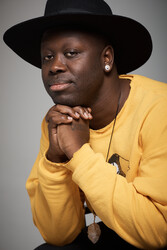Plus, receive recommendations and exclusive offers on all of your favorite books and authors from Simon & Schuster.
Shop Bestsellers
A Read With Jenna Book Club Pick!
Heartwood by Amity Gaige
A search and rescue team race against time when an experienced hiker mysteriously disappears on the Appalachian Trail in Maine. Start reading the novel Elin Hilderbrand calls, "A literary thriller of the highest order."
START READINGGet a FREE ebook by joining our mailing list today!
On Our Radar
Trending Titles
Shop Our Spring Must-Reads
From historical fiction favorites to edge-of-your-seat thrillers, check out our most anticipated spring books!
SHOP NOWOur National Book Critics Circle Award Winner!
Congratulations to Adam Higginbotham's Challenger! Start reading the book The Washington Post calls "compelling and exhaustively researched."
LEARN MOREMarch Is All About Basketball!
Celebrate Women's History Month
Discover the strong and remarkable women who have pushed boundaries, affected change, and made history with these powerful true stories and unforgettable fiction.
SHOP NOW




























































































